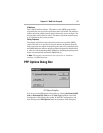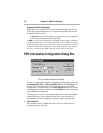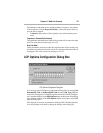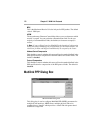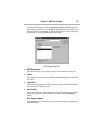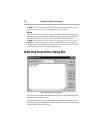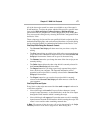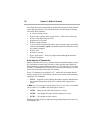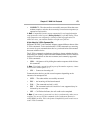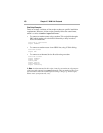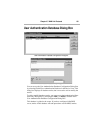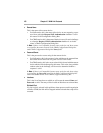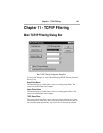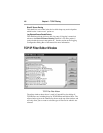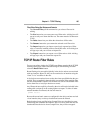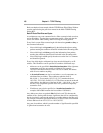
Chapter 10 - WAN Link Protocols 179
• CONNECT -- The other end has successfully answered. Note that some
modems require a switch to be set correctly to receive text responses (as
opposed to result codes).
v Note: Compatible Systems routers automatically send standard modem
setup parameters when a port’s Dialing Method is set for AT dialing. These
setup parameters are adequate for virtually all dial-up applications. In
almost all cases, your modem should work right out of the box.
A Note About the V.25bis Command Set
Different CSU/DSU’s and Terminal Adapters support different subsets of the
V.25bis commands. To be certain that the V.25bis commands you are using
are correct for your communications device, you should refer to the manual
that came with the device.
The V.25bis commands use hardware signaling to denote whether the infor-
mation they are sending is destined for the communications device or the data
link itself. Listed below are the most common (and commonly supported)
V.25bis commands:
• CRN -- Originate a call by dialing the number sequence which follows
this command
v Note: To include a pound sign (#) as part of the number sequence, it must
be enclosed in double quotes (“”).
• CIC -- Connect an incoming call
Communications devices provide several responses depending on the
outcome of an attempted call:
• CNX -- The other end has successfully answered
• INC -- An incoming call has been detected
• VAL -- The command received is valid
• INV -- The command received is invalid or is not supported (may be
followed by an error code)
• CFI -- Call Failure Indicator; the call could not be completed
v Note: If your router is connected to a device synchronously, make sure to
configure it to accept V.25bis commands in bit-synchronous format (i.e.
within HDLC packets). This is the format Compatible Systems routers use to
send V.25bis commands.



